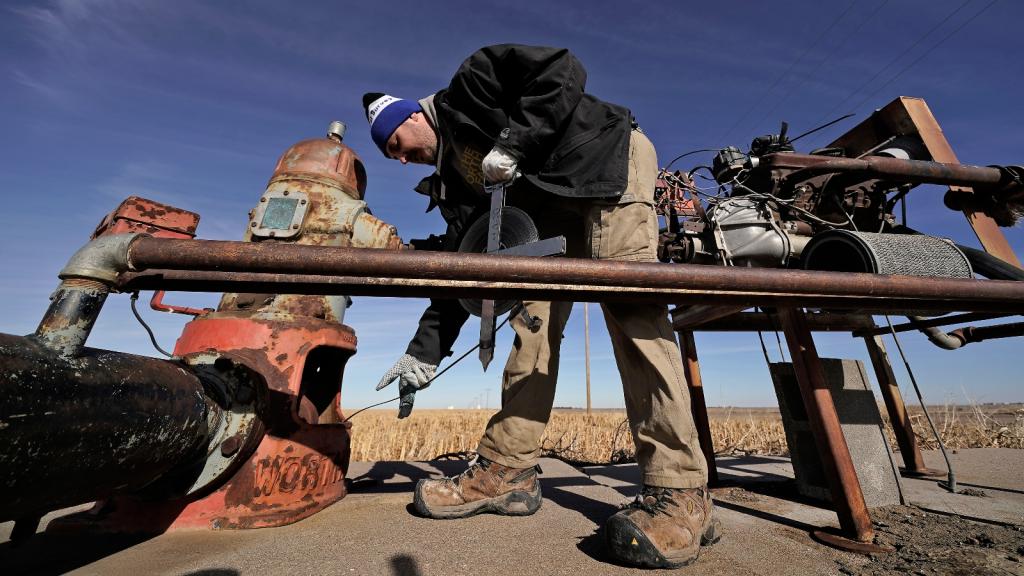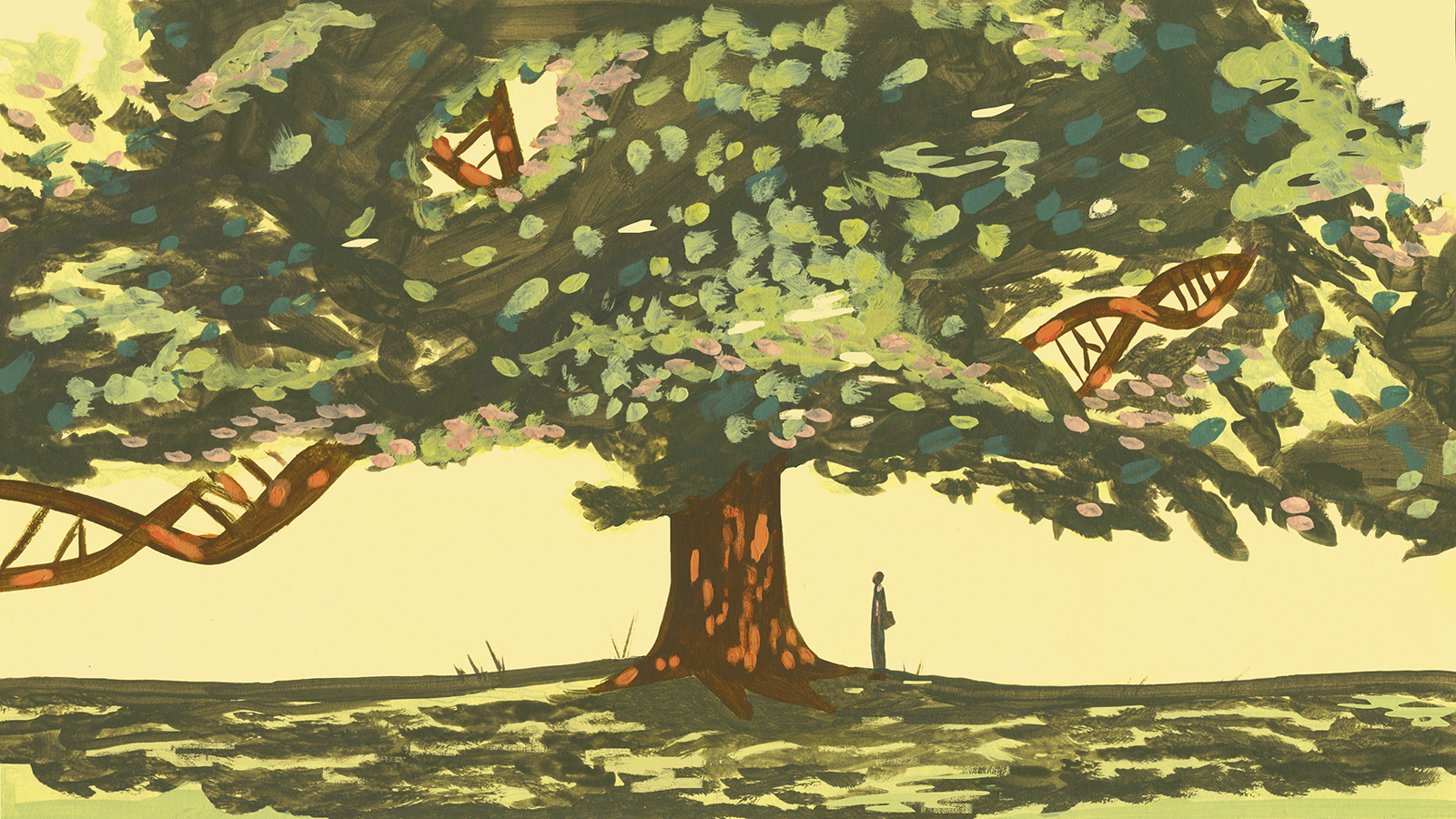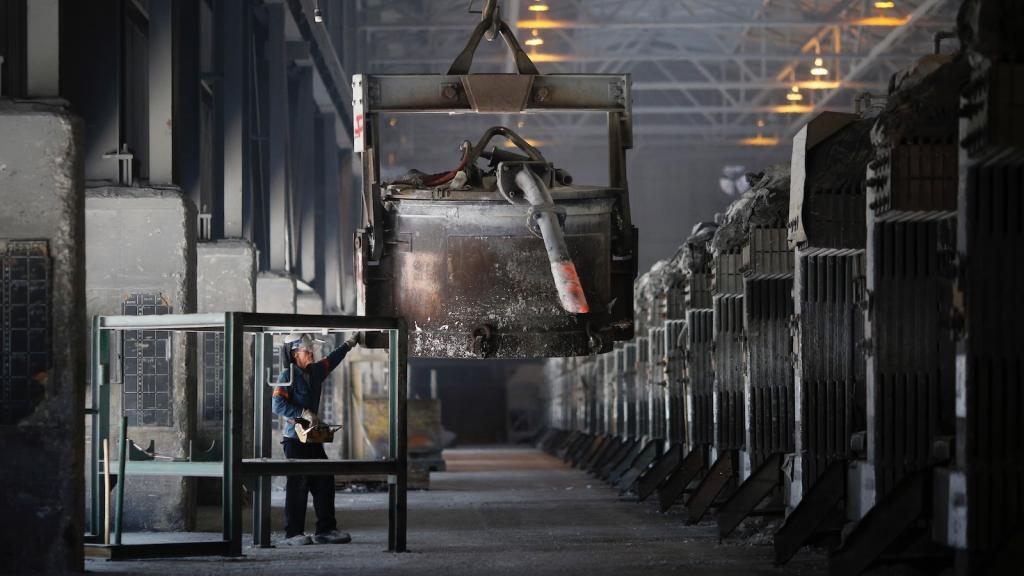This coverage is made possible through a partnership between Grist and WBEZ, the NPR station in Chicago.
If you wanted to point to a tree that can handle climate change, you might start with the bur oak.
When the Earth cooled millions of years ago and tropical species started to die off, the oaks which comprise the Quercus genus began diversifying and moving southward. New species emerged and spread across North America, down into Mexico, and in time diversified further — giving rise to the nearly 300 oak species in North America.
A warming planet will reshape the range where oaks will and can grow. As the family of giant trees — at mature height, a bur oak can clear seven-story buildings — lurches northward, a multistate investigation into the future of oak trees and American forests is underway in three sites across Illinois, Minnesota, and Oklahoma.
Deep inside the Morton Arboretum this fall, a 1,700-acre botanical garden in Chicago’s western suburbs, Andrew Hipp hopped off a golf cart and stepped into a part of the arboretum closed to the public and dedicated to research.
A senior scientist at the Arboretum, Hipp walked past row after row of young bur oaks. More than 1,000 have been planted here, with a third of the oaks grown from acorns collected from near and around Chicago. The rest of the oaks here are in equal parts from Minnesota and Oklahoma.
“This study can give us a good idea of how the most foundational species of our forests are going to evolve as conditions change,” Hipp said. “And with the evolution of the oaks with the migration of the oaks, those will shape the composition of the entire forest in our region.”
Back in 2021, and all at the exact same time, bur oak saplings from Illinois, Minnesota, and Oklahoma were also planted in equal proportion in experimental gardens at The University of Minnesota’s Cedar Creek Ecosystem Science Reserve and University of Oklahoma’s Kessler Field Station.
The goal is to see if different populations of bur oaks perform better in their current environment than in environments within the species’ range but still hundreds of miles away. Scientists want to know how the oaks will respond to different climates, and how that could affect forests in the future.
“It’s raining right now, as we talk, we all put on a raincoat. Oaks can’t do that. So they have to be able to respond to the climate that they find themselves in,” Hipp said.
To measure how the oaks respond, the team of scientists planted offspring from a single tree into three states across the oak’s range. The trees from Oklahoma should be adapted to the droughts, and the ones from northern Minnesota should be adapted to freezing conditions. The expectation is that the oaks would do better in their home environments because they have had generations to adjust.
“If it turns out that oaks are strongly adapted to the local environment, that means they’ve had potentially thousands of years to evolve gene combinations that may prove advantageous in the future as climates change,” Hipp said.
Oaks dominate North American forests — approximately 30 percent of American forests, and their presence is even more pronounced east of the Mississippi, which means that this single group of trees provides a scaffolding critical for a diversity of other life forms. There are more insects, more mammals, more birds, more fungi, and more microorganisms that depend on oaks than practically any other tree genus in North America.
What happens to oaks, and how they respond to a warming planet, will have profound implications for what humanity does next to preserve them.

Earlier this year, the Species Survival Commission of the International Union for Conservation of Nature, or IUCN, designated the Morton Arboretum as the Center for Species Survival: Trees. It’s one of 11 research institutions worldwide, with only five in North America. The Morton Arboretum is the first to focus exclusively on the existential predicament of trees worldwide.
Silvia Alvarez-Clare, the arboretum’s director of global tree conservation, said nearly a third of the more than 400 oak species around the world are at risk of extinction. This experiment could help scientists determine if the oaks need help migrating to preserve climate-adapted genotypes.
“They may not have time to move through evolutionary time in thousands of years,” said Alvarez-Clare. “It’s all happening so fast that we may have to help them and plant some of them.”
It’s not just the oaks facing an existential crisis. Alvarez-Claire said that trees writ large are facing extreme endangerment. In 2021, the Botanic Gardens Conservation International’s State of the World’s Trees report found that over 17,000 of the world’s 60,000 tree species are at risk of extinction. Alvarez-Clare said that’s more than all threatened mammals, birds, amphibians, and reptiles put together.
While the report points to habitat loss, agriculture and commercial logging as the greatest threats to trees worldwide, it stipulates that climate change is increasingly a concern as suitable habitats migrate.
The United States Forest Service has taken notice.
“Trees can move, given enough time,” said Andrew Bowers, the climate adaptation specialist with the office of sustainability and climate for the U.S. Forest Service. “But the pace of current climate change is about 10 times faster than most tree species can migrate.”
Projects utilizing what scientists call “assisted migration” are already underway at the Forest Service.
At its core, assisted migration is a plan hatched to move a species or a population from one area to another in anticipation of climate change. Bower said it’s now just one of the “tools in the toolbox” when Forest Service specialists are thinking about reforestation and developing resilient forests.
For example, foresters at the Superior National Forest in northern Minnesota recently completed an assisted migration plan with input from tribal representatives, state and local governments. In the Pacific Northwest, in states like Oregon and Washington, Bowers said that some foresters have been working with Forest Service geneticists to identify seeds from warmer areas for ongoing reforestation projects and to begin to account for climate change.
If trees as resilient as the oak can’t keep apace with climate change, that could mean disaster for the communities of life that depend on them
Across the three gardens, Jeannine Cavender-Bares, a plant physiological and evolutionary ecologist at the University of Minnesota, said that some overall results are becoming increasingly clear at the drier, hotter southernmost range of the experiment.
“Each population has the highest survival and its home site,” said Cavender-Bares. “It’s just that in Oklahoma, it’s really, really hard for the Minnesota and Illinois population. They’re just not doing well there.”
If the bur oak’s southern range limit is increasingly inhospitable, Cavender-Bares says scientists may need to intercede on the oak’s behalf and speed up migration. She says that could mean transplanting bur oaks from southern climates farther north to share drought-resistant genotype.
“So in a warming world, how do we maintain healthy forests?” said Cavender-Bares. “We need trees that are adapted, have the right genes, that are adapted to the environments of the future.”
Back at the arboretum, Hipp turns and inspects a leaf from an Oklahoma bur oak. He says that whether the bur oak will need a helping hand is still very much in the air, but it’s something scientists need to know — and the sooner, the better.
“The risk of losing these hard-earned gene copies that have evolved over the course of millions of years, inherited by bur oak and evolving within bur oak,” Hipp said. “When we lose those, we’ve lost this opportunity to solve problems that we can’t even predict in the future. So every tree is a warehouse of potential solutions to evolutionary problems.”




